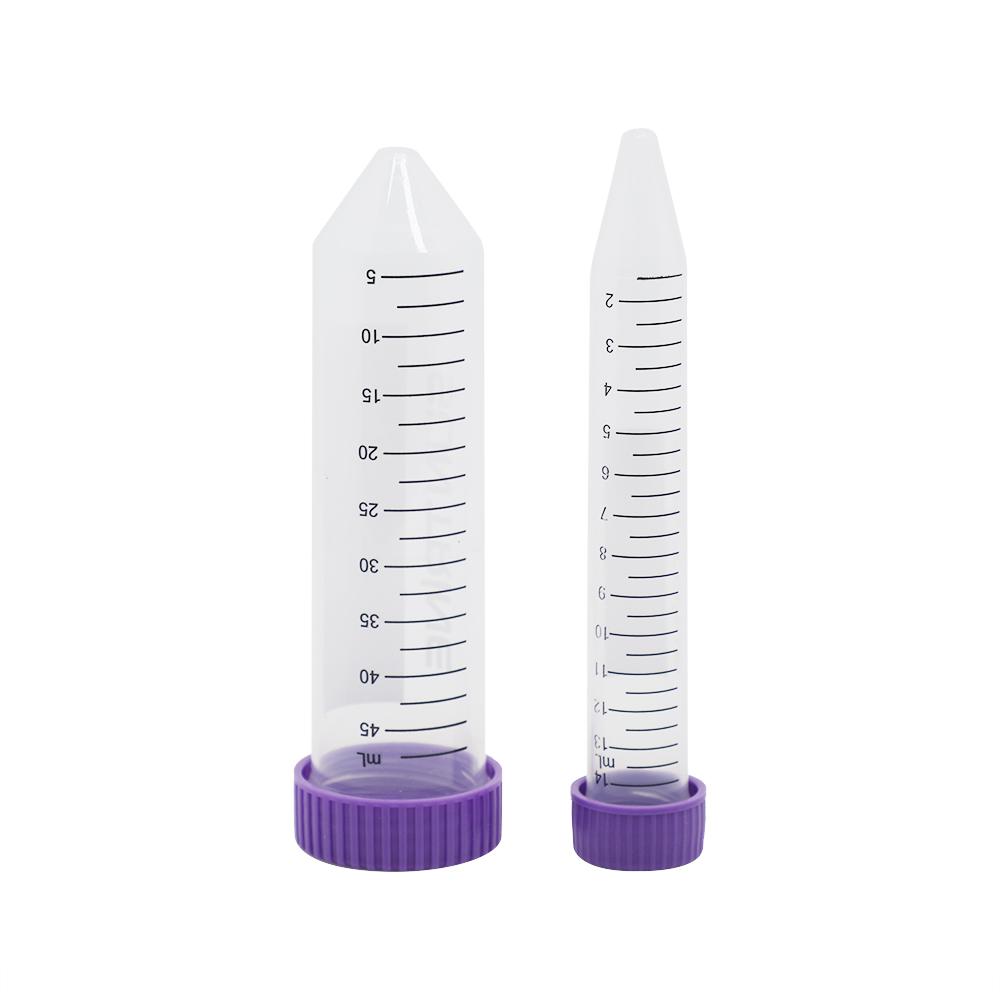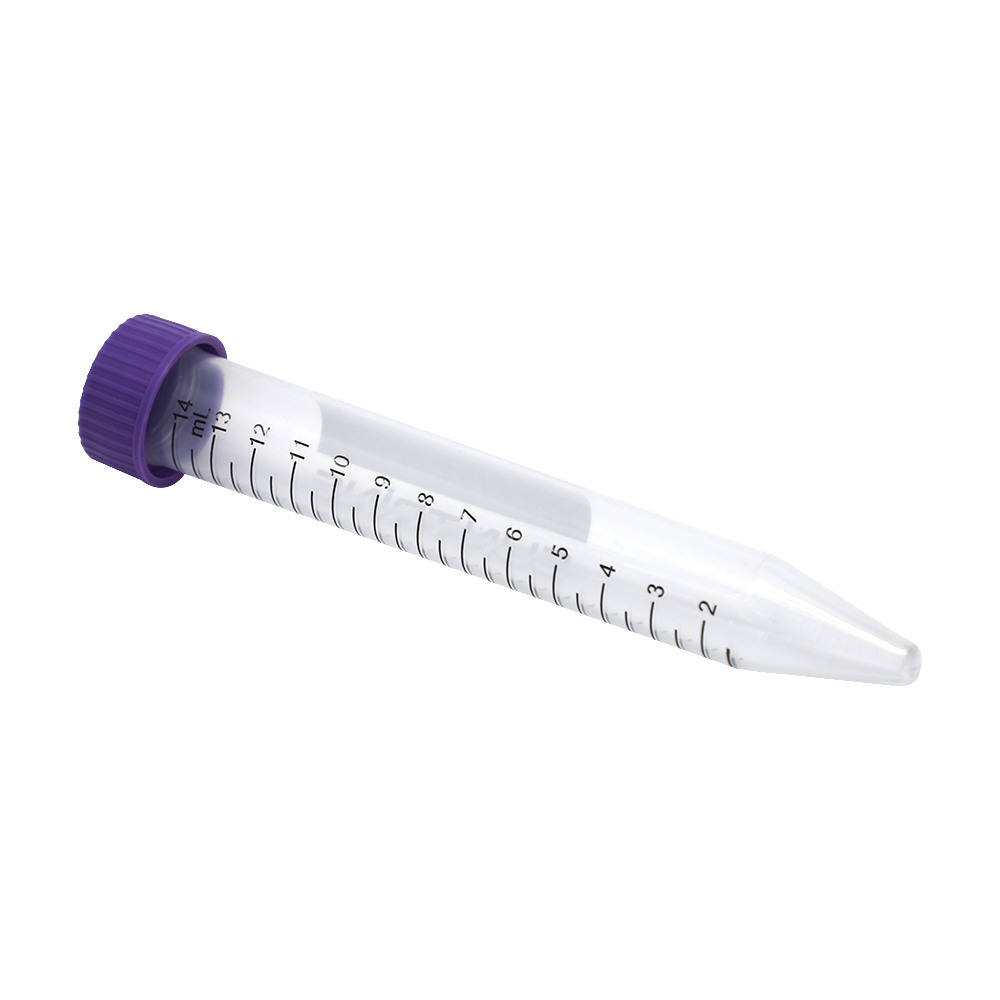Introduction
15 mL Conical Centrifuge Tubes are indispensable tools in laboratory settings, facilitating sample storage, centrifugation, and separation processes. To maintain their effectiveness and prevent contamination, proper storage and handling are paramount. This article outlines essential recommendations to preserve the sterility and integrity of these tubes.

Understanding the Importance of Proper Storage
Proper storage is crucial to uphold the sterility of 15 mL Conical Centrifuge Tubes. Storing them in a clean, controlled environment, away from contaminants and direct sunlight, is essential. Utilizing designated storage racks or boxes can prevent accidental damage and maintain organization.
Temperature and Environmental Considerations of 15 mL Conical Centrifuge Tubes sterile
The material composition of 15 mL Conical Centrifuge Tubes, typically made from durable materials like polypropylene or polycarbonate, allows them to withstand a range of temperatures. However, despite their resilience, it's crucial to store these tubes within an optimal temperature range to maintain their structural integrity and prevent potential damage.
Extreme temperature fluctuations can adversely affect the tubes. High temperatures might lead to warping or deformation, compromising the tubes' ability to seal properly, risking sample contamination. Conversely, extremely low temperatures could cause brittleness, making the tubes susceptible to cracking or breakage.
Ideally, storing these tubes at room temperature or within a controlled laboratory environment between 15°C to 25°C (59°F to 77°F) is recommended. This moderate temperature range ensures stability and minimizes the risk of material degradation, preserving the tubes' functionality over time.
Moreover, it's crucial to shield the tubes from direct exposure to sunlight or UV radiation. Prolonged exposure to UV rays can degrade the materials, potentially impacting their performance and transparency. Therefore, storing the tubes in opaque or UV-resistant containers or drawers can safeguard them from such harmful radiation.
In addition to temperature considerations, environmental factors should be taken into account. Humidity levels in the storage area should be controlled to prevent moisture buildup inside the tubes, which could lead to condensation and compromise the sterility of stored samples. Maintaining a dry environment aids in preserving the integrity of these tubes.
Ensuring a stable and controlled storage environment for 15 mL Conical Centrifuge Tubes is fundamental. By adhering to recommended temperature ranges and environmental conditions, laboratories can prolong the lifespan of these tubes, maintain their sterility, and ensure reliable results in various scientific experiments and procedures.
Sterile Handling Procedures of 15 mL Conical Centrifuge Tubes sterile
Maintaining sterility during the handling of 15 mL Conical Centrifuge Tubes is crucial to prevent contamination of samples and ensure the reliability of experimental results. Following strict sterile procedures is imperative to uphold the integrity of both the tubes and the samples they contain.
- Hand Hygiene and Personal Protective Equipment (PPE)
Before handling the tubes, thorough handwashing with soap and water is essential. Alternatively, using alcohol-based hand sanitizers can effectively disinfect hands. Wearing appropriate PPE, such as gloves, a lab coat, and possibly a face mask, minimizes the risk of introducing contaminants.
- Use of Sterile Techniques
Employing aseptic techniques, including working within a laminar flow hood or sterile workbench, creates a controlled environment that reduces the risk of microbial contamination. This controlled setting helps maintain the sterility of the tubes and the samples being transferred.
- Avoiding Cross-Contamination
Preventing cross-contamination between samples is paramount. Each tube should be handled separately and never touched with non-sterile gloves or instruments. Utilizing sterile pipettes, syringes, or forceps for transferring samples minimizes the risk of introducing external contaminants.
- Minimizing Exposure and Contact
Limiting the exposure of the tube's interior to external elements is crucial. Keeping the tube closed when not in use prevents airborne particles or microorganisms from entering. Additionally, minimizing the time the tubes remain open during sample transfer reduces the risk of contamination.
- Proper Storage After Use
After use, securely close the tubes using their caps to maintain sterility. Store the sealed tubes in appropriate containers or racks designed for sterile storage, ensuring they are kept upright and organized to prevent accidental spillage or contamination.
- Regular Monitoring and Validation
Periodic validation of sterile techniques and environments is essential. Laboratories should conduct routine checks and assessments to verify the effectiveness of their sterile handling procedures, ensuring compliance with industry standards and regulations.
Labeling and Identification of 15 mL Conical Centrifuge Tubes sterile
Proper labeling and identification of 15 mL Conical Centrifuge Tubes play a pivotal role in maintaining sample traceability, minimizing errors, and ensuring accurate record-keeping within laboratory settings. Employing standardized labeling practices enhances organization and prevents confusion, promoting efficiency and accuracy in experimental procedures.
- Clear and Comprehensive Labeling
Utilizing waterproof and chemical-resistant labels is essential to withstand various laboratory conditions. Clearly label each tube with pertinent information, including experiment or sample identification numbers, dates, sample types, and any critical notes or warnings regarding hazardous contents or special storage requirements.
- Legibility and Durability
The information on the labels should remain legible throughout the entire experimental process. Utilizing permanent markers or specialized labeling systems ensures longevity and prevents smudging or fading of critical details, even when exposed to various solvents or handling conditions.
- Color-Coding or Symbolic Labels
Implementing a color-coding system or using symbolic labels can aid in quick visual identification. Assigning specific colors or symbols for different sample types, experiments, or researchers helps streamline the identification process and reduces the likelihood of errors.
- Barcoding for Automation
Consider incorporating barcodes on the labels for efficient sample tracking and automated data entry. Barcoded labels enable swift scanning and recording of sample information, reducing manual errors and expediting data collection and analysis processes.
- Proper Placement and Consistency
Ensure consistent placement of labels on the tubes, preferably on a flat surface that doesn't obstruct the tube's closure. Avoid placing labels on curved surfaces or areas that might impede the tube's stability when placed upright in racks or centrifuges.
- Documentation and Record-Keeping
Maintain comprehensive records correlating the labeled information with experimental data and sample details. Documenting label information alongside experimental procedures ensures proper sample identification and traceability for future reference.
Implementing robust labeling and identification practices for 15 mL Conical Centrifuge Tubes facilitates efficient sample management, mitigates errors, and enhances overall laboratory workflow. Accurate labeling and record-keeping contribute significantly to maintaining data integrity and traceability, essential aspects of quality assurance in scientific research and experimentation.Disposal and Recycling Guidelines of 15 mL Conical Centrifuge Tubes sterile
Disposal and Recycling Guidelines for 15 mL Conical Centrifuge Tubes
Appropriate disposal and recycling practices for 15 mL Conical Centrifuge Tubes are essential to minimize environmental impact and ensure compliance with waste management regulations. As these tubes often come into contact with potentially hazardous materials, proper disposal procedures are crucial to prevent contamination and promote environmental responsibility.
- Segregation of Biohazardous Waste
Discarded tubes that have been in contact with biohazardous materials should be segregated from regular waste. Use designated biohazard waste containers or bags clearly marked with biohazard symbols to prevent accidental exposure and ensure proper handling.
- Decontamination Procedures
Before disposal, decontaminate the tubes to eliminate any remaining hazardous materials. Rinse the tubes thoroughly with appropriate disinfectants or autoclave them to sterilize and render them safe for disposal or recycling.
- Recycling Possibilities
Assess whether the tubes are recyclable based on the materials they are made from. Polypropylene and polycarbonate, common materials used in these tubes, are recyclable plastics. However, ensure they are free from any biohazardous or chemical residues before recycling.
- Disposal in Compliance with Regulations
Dispose of decontaminated tubes in accordance with local regulations and guidelines. Follow any specific instructions provided by waste management facilities or authorities regarding the disposal of laboratory waste, ensuring compliance with environmental regulations.
- Documentation and Record-Keeping
Maintain accurate records of the disposal process, including decontamination procedures performed and disposal methods used. Documenting these details ensures transparency and compliance with waste management regulations.
- Consideration of Alternative Disposal Methods
Explore environmentally friendly disposal methods or programs provided by waste management facilities. Some facilities offer specialized programs for the disposal or recycling of laboratory waste, providing safe and eco-friendly solutions.
- Educating Laboratory Personnel
Educate laboratory personnel on proper disposal protocols and recycling initiatives. Training and raising awareness among staff regarding waste segregation, decontamination procedures, and environmentally responsible disposal practices promote a culture of sustainability within the laboratory.
Conclusion
In conclusion, the storage and handling of 15 mL Conical Centrifuge Tubes play a pivotal role in maintaining their sterility and integrity. Following these recommended practices not only ensures the reliability of experimental results but also minimizes the risk of contamination in laboratory procedures.
Related Products





